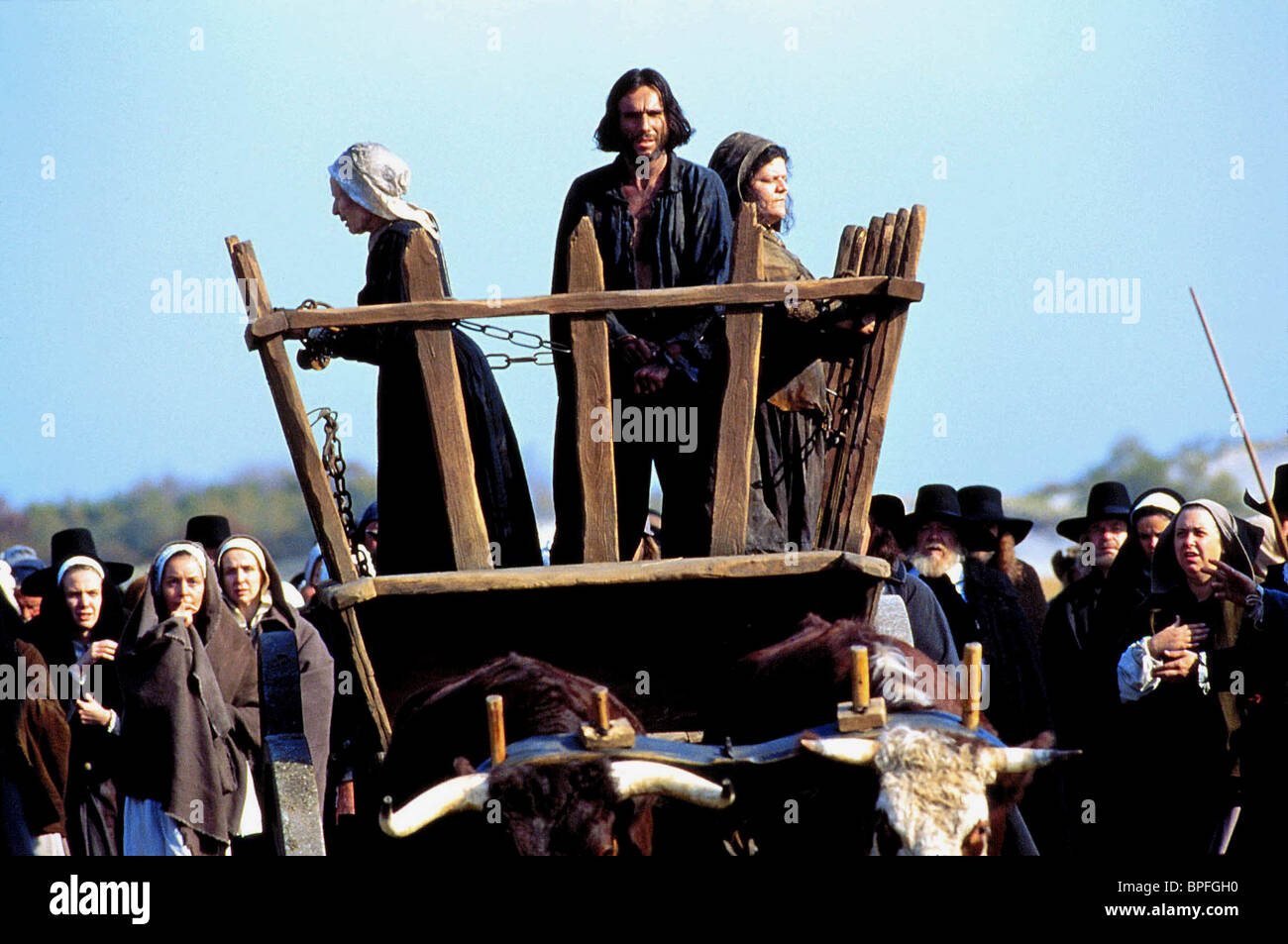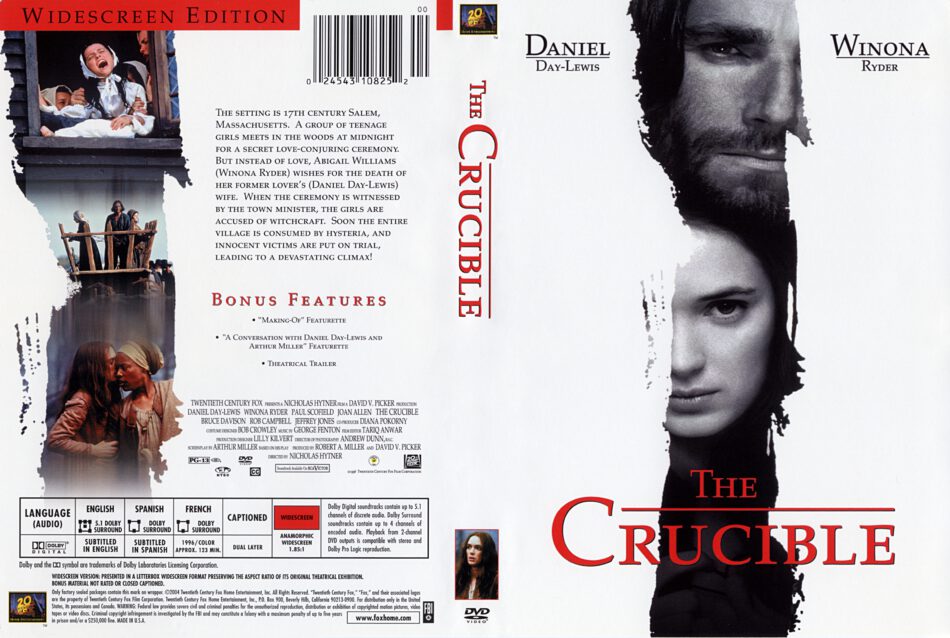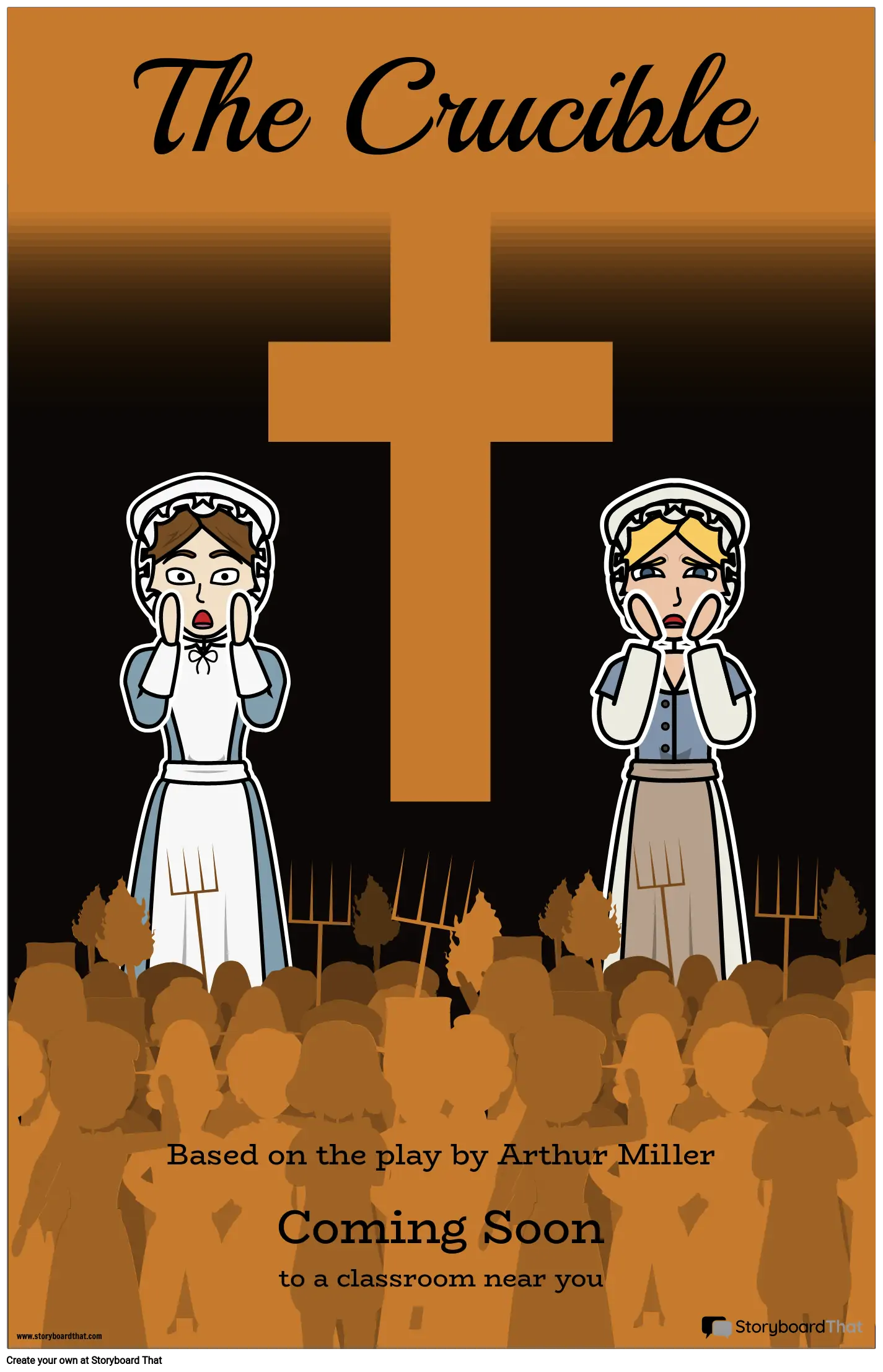The Crucible - Arthur Miller.pdf. Displaying The Crucible - Arthur Miller.pdf. The Crucible movie questions (released 1996) help keep students engaged throughout the film by providing 15 questions for them to answer to keep them on track.The Crucible Worksheet follows along some young village girls meet in the woods with a Barbadian slave named Tituba and while one of the girl. Watch The Crucible. Streaming Guide Movies Drama. Watch online Watch The Crucible. 1996 Streamers Information Rated: 14, AA, Frn 11 r, 12, PG-13, G, M. Thousands of movies and TV shows.

Intermittent between tracking shots, the camera is set behind trees or branches as it follows the girls, as if they are being secretly monitored. When the girls are casting the spell, close-ups and fast paced pan shots are used to conjure a feeling of chaos and frenzy. Intermittent switching between shots further emphasizes this. For example; the camera switches from shots of the dancing girls to the tracking of Parris searching for them. This creates anxiety and prepares the audience for the scene's climax; Abigail's uninhibited violence. Lighting and sound are another two key factors that can be manipulated to heighten the dramatic value of the scene. With the opening of the first sequence, the musical motif that accompanies Abigail throughout the film begins to play as she is introduced. It follows her emotions, the tempo increasing as she hurries to ready herself and creep out of the house. As the forest comes into view, the eerie surroundings are complemented by the change in music. Wind instruments accompany drums to create an uncanny aura. The absence of sound effects until the girls reach the forest focuses the attention of the audience on the characters. Sound effects are introduced immediately after they set foot in the forest. This technique creates a contrast in the girls' mood - previously being sinister and silent,

Miller's play is about religious hysteria fanned by repressed and denied sexual lust. During the course of the action there will be an outbreak of accusations of witchcraft--all of them false, most of them inspired either by sexual revenge or misguided holy ecstasy. When the play was first produced, it was easily decoded as an allegory about the anti-communist frenzy of the McCarthy period. Today, ironically, we have come full circle; we are no longer paranoid about communists, but we are once again paranoid about Satan-worship.
The Crucible is a 1953 play by American playwright Arthur Miller.It is a dramatized and partially fictionalized story of the Salem witch trials that took place in the Massachusetts Bay Colony during 1692–93. The movie adaption of The Crucible, directed by Nicholas Hytner, does a very good job sticking to the same plot and overall themes as the play by Arthur Miller. Although the movie remains relatively true to the book there will always be some differences in book to movie adaptations, or in this case play to movie.

The Crucible Movie 2020
Perhaps every age gets the “Crucible” it deserves. Anyone who has seen the recent documentary “Paradise Lost: The Child Murders of Robin Hood Hills” will recognize in its portrait of a small Arkansas town many parallels with this fable about Salem, including those who mask their own doubts in preemptive charges of Satanic conspiracies. (Would Satanism die out altogether if not for the zeal of its opponents in publicizing it?) At the center of the story of “The Crucible” is one moment of unguarded lust, in which a good man named John Proctor (Daniel Day-Lewis) commits adultery with a saucy wench named Abigail Williams (Winona Ryder), his servant girl. She is one of the naked moonlight dancers, and is furious because she was rejected by a repentant Proctor, and dismissed by Proctor's wife Elizabeth (Joan Allen). After being witnessed in the midnight revels by the Rev. Parris (Bruce Davison) and charged with unholy behavior, she counters with accusations against Proctor.
The Crucible Movie 2014

_poster.jpg/220px-The_Crucible_(1996)_poster.jpg)
The Crucible Movie Trailer
Parris is a narrow man but not a bad one. He brings in a consultant, Rev. Hale (Rob Campbell), who forces one of the other revelers to confess. (She is a slave from Barbados who allegedly tutored the local girls, although it is hard to imagine class and racial barriers being so easily crossed at that time.) Soon the whole village is abroil with accusations and counter-accusations. Hale begins to suspect some of the motives, but events have been set inexorably in motion. An experienced witchhunter, Judge Danforth (Paul Scofield), is brought to town, takes an early hard line against witchcraft, and then finds it impossible to back down, even as the evidence seems to be evaporating. He fears losing face--and believes obscurely that *someone* should be punished, lest witchcraft seem to be condoned. This is of course the same dilemma faced by all Satan-floggers: Without Satanists to flog, they'd be out of a job.